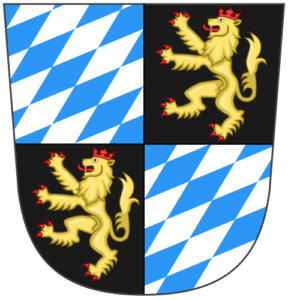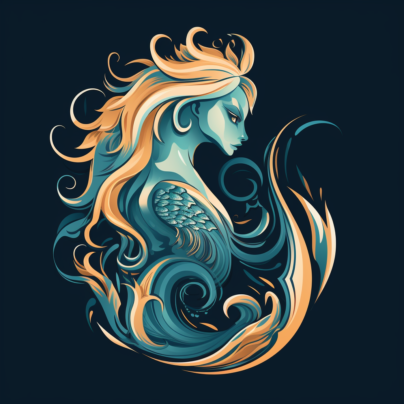Duchy of Bavaria (State of the Holy Roman Empire)
A fractured land of dukes, intrigue, and hidden power, the Duchy of Bavaria teeters on the edge of war and wealth in the heart of the Holy Roman Empire!

- Location
- Southeastern Holy Roman Empire
- Bordered by Bohemia, Swabia, and Austria
- Key features: Danube River, Isar and Inn Rivers, Bavarian Forest, Eastern Alps
- Capital City: Munich (München)
- Fortified trade city on the Isar River
- Known for ducal courts, the Frauenkirche, and moonlit merchant fairs
- Other Settlements
- Landshut – Tournaments, nobility, and university life
- Ingolstadt – Fortified town with military strength, wary of magic
- Freising – Religious and scholarly center
- Rosenheim – Alpine settlement with pagan undertones
- Other Names
- Bayern – Local and Imperial term
- Silbermark – Poetic or foreign name (Silver March)
- The Lion’s Reach – Used by foreign emissaries referencing ducal power
- Geographic and Visual Description
- Rolling green hills, pine forests, rivers, and snowy mountains
- Mix of cultivated farmland and untamed wildlands
- Shrines and silver coins line roadways, offering protection from spirits
- Real-World Inspirations
- 15th-century Bavaria (late medieval Germany)
- Wittelsbach dynasty and feudal fragmentation
- German folklore, forest mythology, and Catholic mysticism
- Holy Roman Empire politics and cultural complexity
- Heraldry and Symbols
- Arms: Blue and white diamonds; silver lion on black field
- Flag: Silver, midnight blue, forest green with gold trim
- Symbol: Silver crescent moon above a drawn bow (hunter’s sigil)
- National Motto and Values
- “Mit Treue und Stolz” – “With Loyalty and Pride”
- Core ideals: Honor, duty, lineage, faith, martial excellence
- Moral Outlook
- Stoic, practical, loyal to land and family
- Nobility and law valued, but folk beliefs still influence rural justice
- Superstition holds weight, especially outside major cities
- Spiritual and Religious Landscape
- Dominated by Imperial Catholicism (saints, relics, divine hierarchy)
- Major sites: Cathedral of St. Korbinian, Moon Chapel of St. Aegidius
- Folk traditions: Moon Stag, forest spirits, solstice rites still persist
- Government and Leadership
- Ruled by branches of the House of Wittelsbach
- IDivided into Bavaria-Munich, Bavaria-Landshut, and former Bavaria-Ingolstadt
- Each duchy claims authority; Munich often holds symbolic seniority
- Electoral privilege ties them to the Holy Roman Emperor
- Military Structure
- Knights of the Moon Banner – elite ducal cavalry
- Landwehr – local militias tied to noble estates
- Waldläufer – forest scouts and trackers
- Order of the Silver Hart – religious knightly order hunting monsters and heresy
- Tactics: Strong castles, ambushes in woods, armored cavalry charges
- Economy
- Resources: Timber, silver, salt, cattle, grain, wool
- Trade goods: Beer, glassware, religious relics, leather, weapons
- Major trade routes cross Danube and alpine passes
- Smuggling of pagan relics and charms persists despite Church bans
- Technology and Culture
- Late medieval innovations: plate armor, crossbows, early firearms
- High literacy among clergy, scribes, and university elites
- Magic exists but is controlled by church and ducal license
- Alchemy, astronomy, and occult philosophy thrive in secret
- Present-Day Threats and Challenges
- Noble infighting over land and inheritance destabilizes the realm.
- Border tensions with Bohemia and Tyrol risk open conflict.
- Rise of heretical preachers challenges Church orthodoxy.
- Reports of supernatural activity in forests and mountains (e.g., werewolves, revenants).
- Population and Society Composition
- ~1.2 million inhabitants.
- 85% humans (nobility, clergy, peasants, burghers).
- 10% dwarves (miners and smiths in the Alps).
- 3% elves (isolated forest enclaves).
- 2% others (gnomes, halflings, fae-blooded, hermits).
- Strongly feudal, with power concentrated among nobility and clergy.
- The Structure of Authority
- Governed under feudal law as part of the Holy Roman Empire.
- Duke at the top, followed by counts (Grafen), bishops, and knights.
- Ecclesiastical territories hold near-equal power to secular ones.
- The Decision-Makers
- Ducal Court in Munich: legislative and military control.
- The Herzograt (Council of Nobles): advisory body to the Duke.
- Powerful bishops and abbots wield authority in Church lands.
- Monarch or Ruling Power
- Duke Albrecht III (House of Wittelsbach)
- Central authority figure.
- Commands Bavaria’s armies.
- Manages feudal obligations and relations with the Emperor.
- Duke Albrecht III (House of Wittelsbach)
- Famous Figures and Influencer
- Duke Albrecht III – stern, militaristic ruler.
- Bishop Johann of Freising – theologian and inquisitor.
- Elisabeth of Bavaria – duchess and skilled negotiator.
- Roderich the Black – legendary knight with rumored arcane powers.
- Noteworthy Locations and Landmarks
- Munich (München): seat of the ducal court and trade hub.
- Freising Abbey: religious and mystical knowledge center.
- Lake Chiemsee: ancient sacred site with mythic history.
- Alpine Watchtowers: defend mountain passes from invaders.
- Power, Influence, and Reach
- Controls key trade routes between Italy and the Empire.
- Moderate military strength, strained by constant levies.
- Cultural prestige growing through arts and theology.
- Alliances, Foes, and Diplomacy
- Allies: Holy Roman Emperor, Austria, Church authorities.
- Enemies: Tyrolean warlords, rebellious Franconian nobles.
- Unstable Relations: Swiss cantons (mercenaries and trade friction).
- Inhabitants/Creatures
- Domestic: wolves, bears, deer, mountain goats.
- Dangerous: werewolves, kobolds, alpine spirits.
- Mythical: fae entities, rumored dragons in secluded caves.
- Conditions/Temperature/Terrain
- Alpine south with forests, rivers, and fertile lowlands.
- Cold winters with heavy snow; mild, rainy summers.
- Dominated by the Danube and Isar river systems.
- Weather Hazards
- Avalanches in the Alps.
- Spring floods along major rivers.
- Unnatural fogs and moonless nights in cursed woods.
- Notable Features
- Moonstone Gate: ancient fae-linked archway.
- Irondeep Mines: rich dwarven tunnels with secrets.
- Black Crucifix Hill: feared cursed site ignored by clergy.
- Common Languages
- High German: court and legal use.
- Bavarian dialects: common among the people.
- Latin: for Church, scholarship, and diplomacy.
- Dwarvish and Sylvan: spoken in isolated communities.
- Cultural Events or Festivals
- Wild Hunt Festival (Autumn): honors forest spirits and old gods.
- Feast of Saint Ulrich (Winter): pious procession and miracle plays.
- Spring Planting Rite: folk-based ceremony rooted in older traditions.
- Local Laws or Customs
- Duels allowed for noble disputes.
- Witchcraft outlawed, but pagan customs persist.
- Offering a bow at a door signals a challenge or vendetta.
The government of Bavaria is a feudal monarchy, with the current ruler being Duke Albert IV, a wise and just leader who is greatly respected by his subjects. The nobles of Bavaria are powerful and influential, but they must also answer to the duke.
Bavaria is home to many notable residents, including the famous painter Albrecht Dürer and the renowned scholar Johannes Kepler. There are also many impressive places of interest in Bavaria, such as the stunning Neuschwanstein Castle and the historic Nuremberg Castle.
The population of Bavaria is diverse, with many farmers, craftsmen, and merchants living alongside the nobility. Despite occasional conflicts and tensions, the people of Bavaria generally enjoy a high quality of life and are proud of their culture and heritage.

 Buy me a coffee
Buy me a coffee